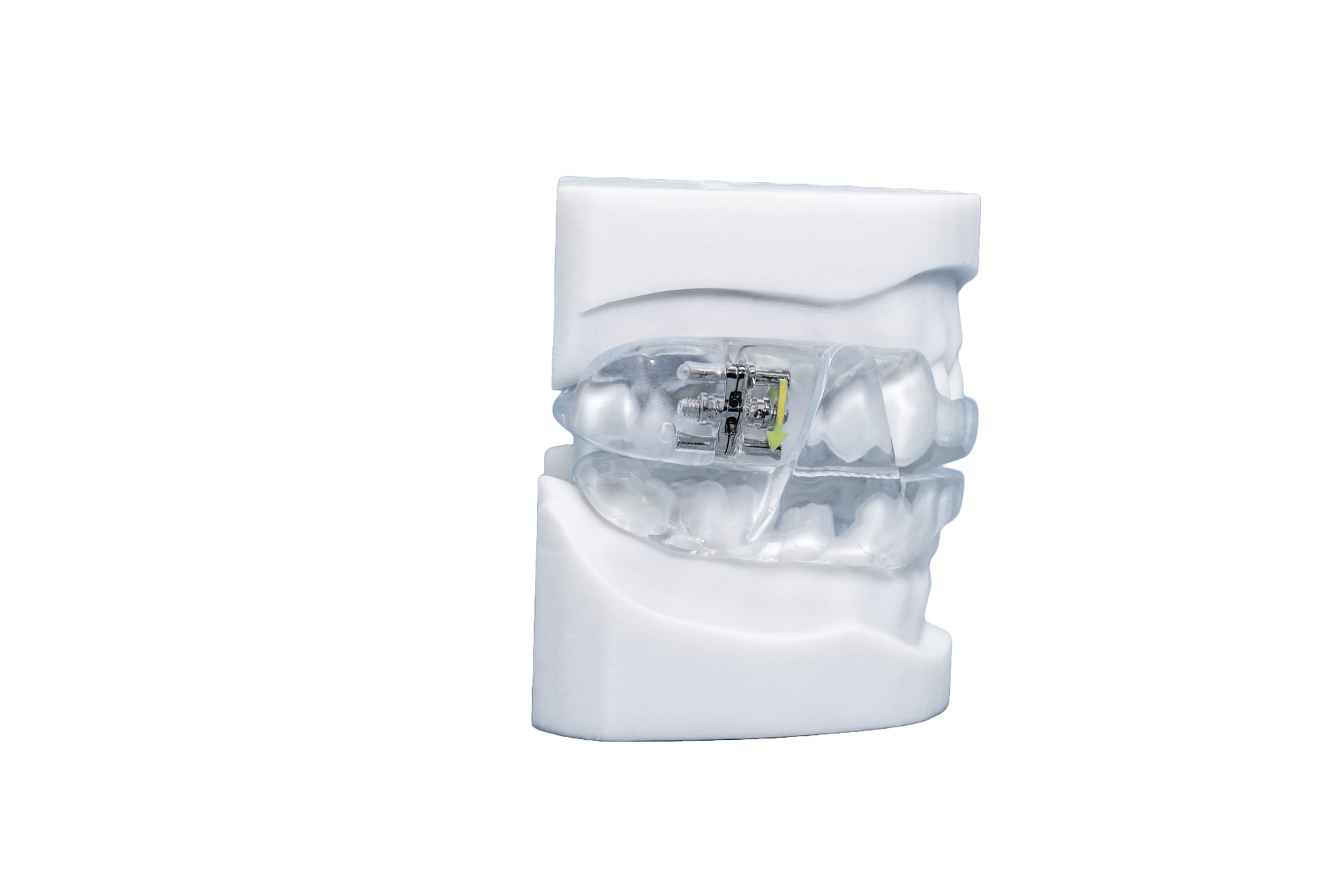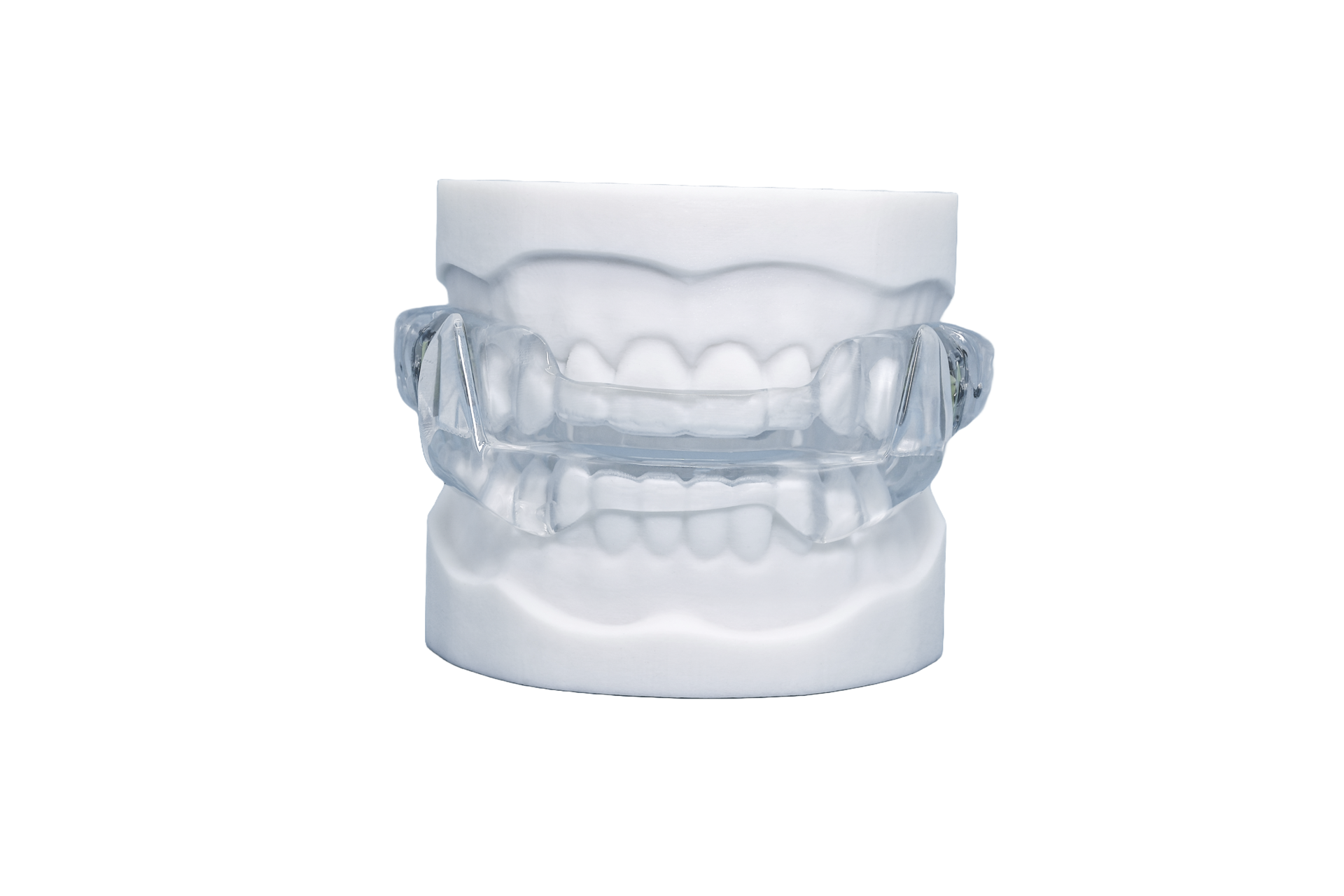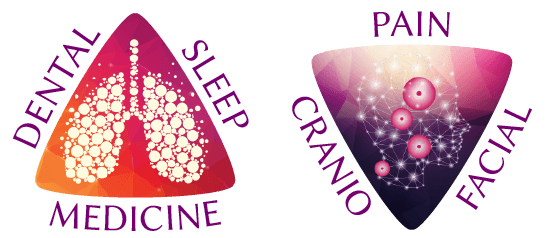Treatment Options
- Maintains the lower jaw in the forward position during sleep, thus opening the airway.
- Oral appliance therapy treats OSA and snoring by preventing the airway from becoming obstructed during sleep similarly to CPAP-devices.
- Oral appliances accomplish this by protruding the lower jaw, which leads to:
- Increased retro lingual space
- Increased tension on the soft palate that, when relaxed, causes snoring
- Open the upper airway at most levels
- Decreased collapsibility of the upper airway

Mechanism of action of Mandibular Advancement Device
MADs maintain the lower jaw in a forward position during sleep. In doing so,
MADs generate the following effects:
- Create an anterior movement of suprahyoid and genioglossus muscles
- The suprahyoid muscle widens the esophagus during swallowing
- The genioglossus muscle depresses and protrudes the tongue
- Decrease the gravitational effect of the tongue
- Stretch the soft palate
- Stabilize the mandible to the hyoid bone
The hyoid bone attaches to the muscles of the floor of the mouth and the tongue above, to the larynx below, and to the epiglottis and pharynx behind. This result in an increase in lateral pharyngeal cross-sectional area upper airway muscle activity, thus preventing snoring and obstructive apneas.


